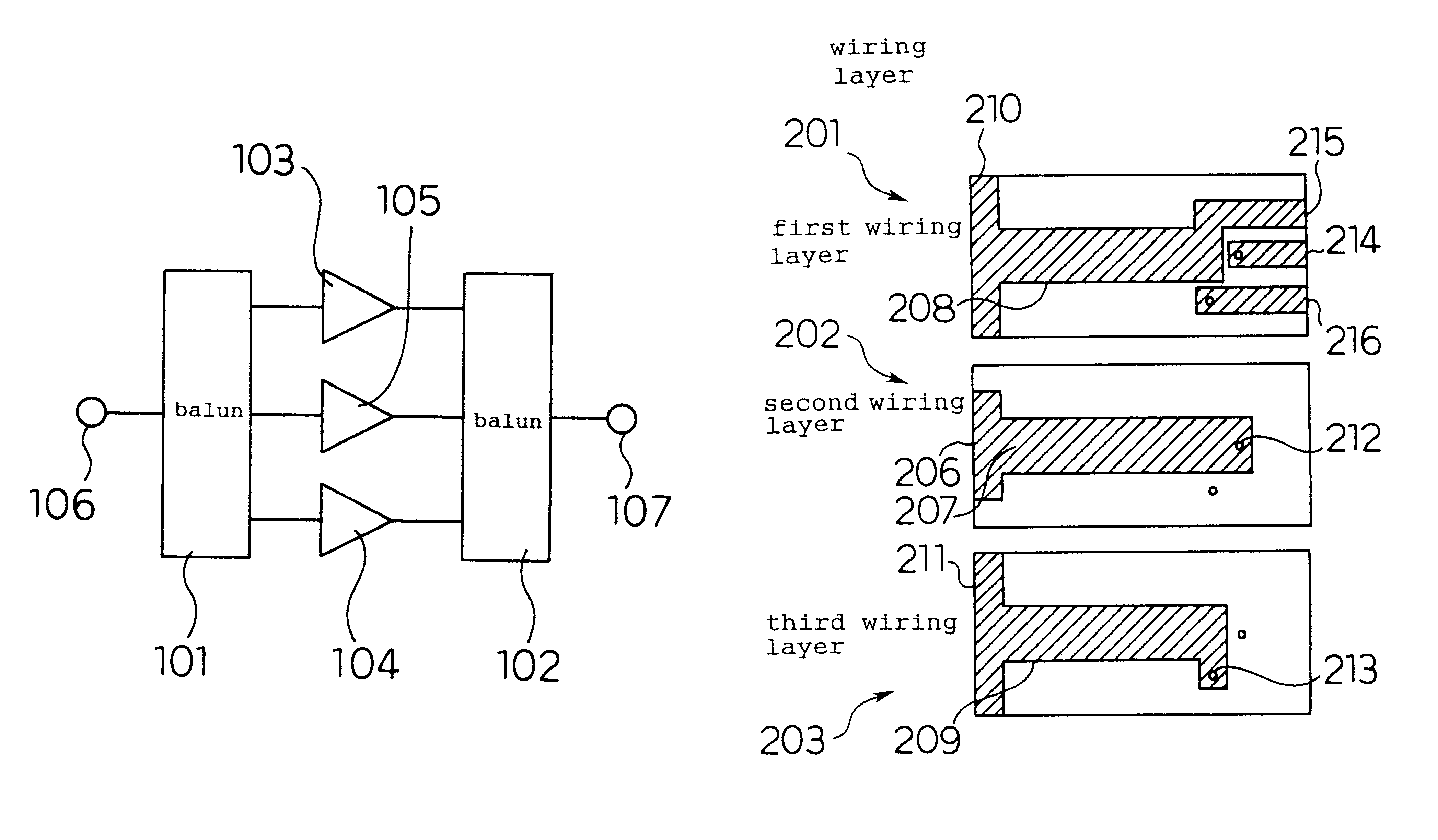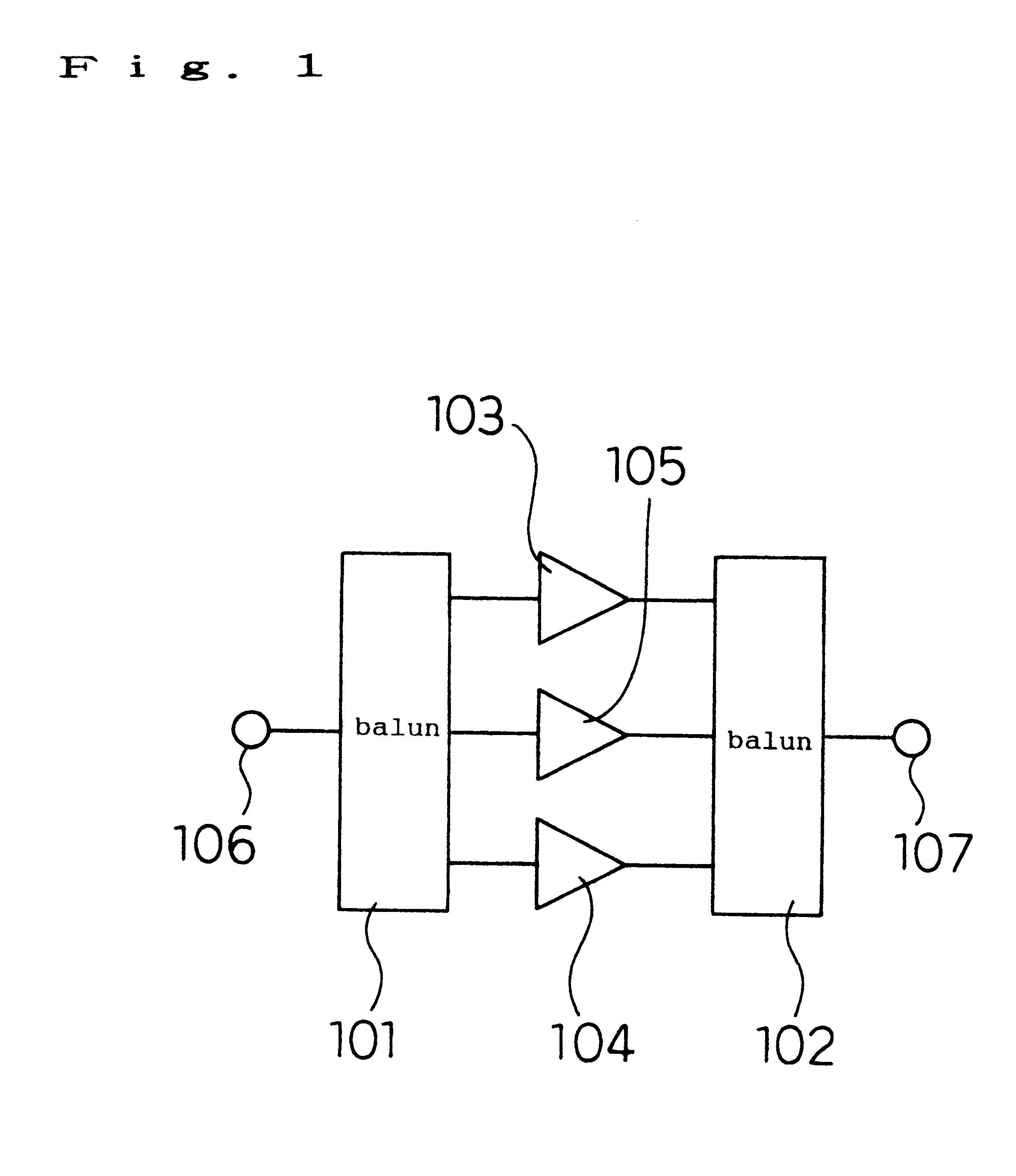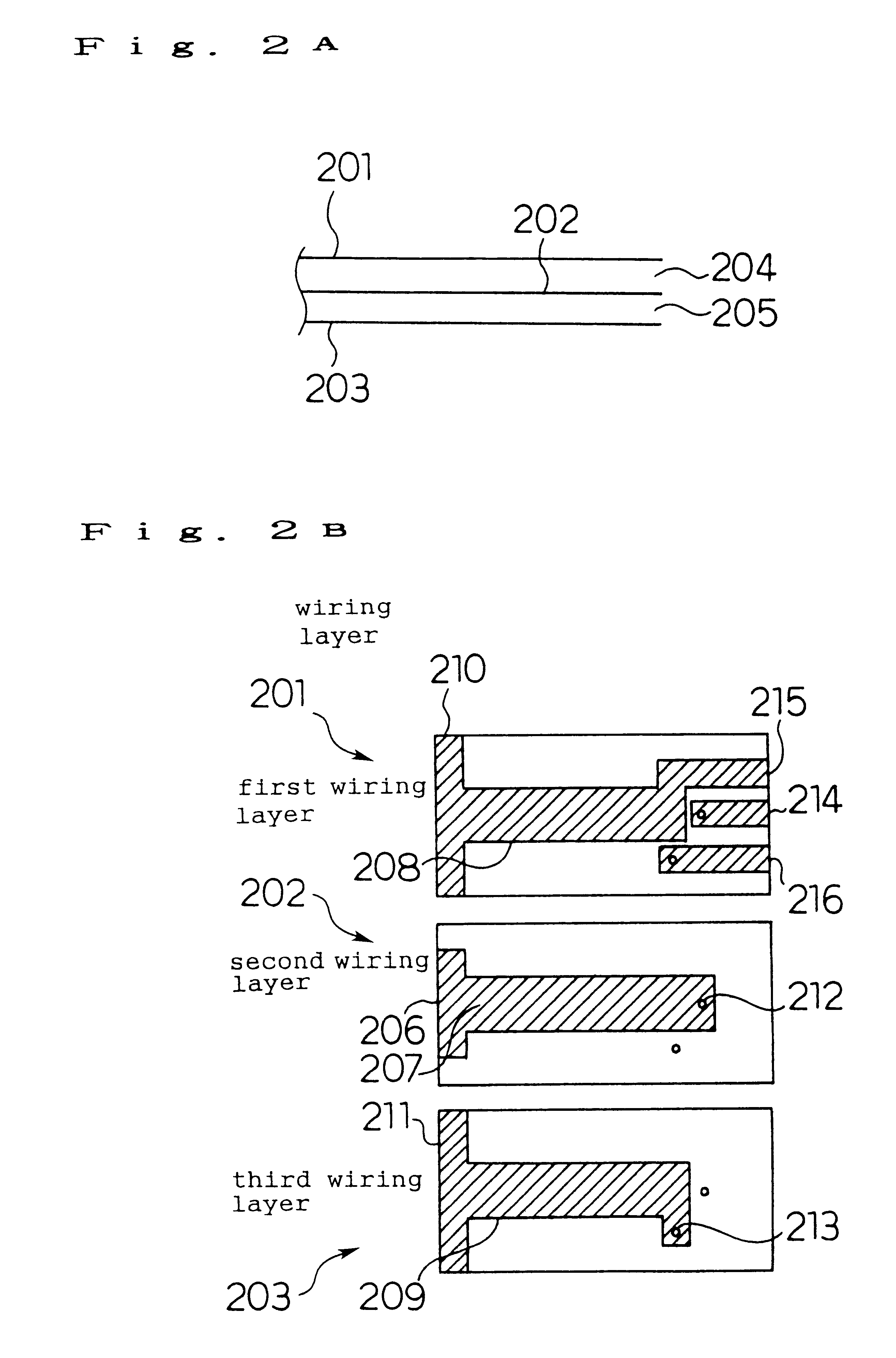Power splitter/ combiner circuit, high power amplifier and balun circuit
a technology of combiner circuit and splitter, which is applied in the direction of phase-splitters, one-port networks, waveguide type devices, etc., can solve the problems of unbalanced power splitting, low versatility of configuration, and large load loss of splitter/combiner
- Summary
- Abstract
- Description
- Claims
- Application Information
AI Technical Summary
Benefits of technology
Problems solved by technology
Method used
Image
Examples
first embodiment
(First embodiment)
FIG. 1 is a view showing the configuration of a high power amplifier in accordance with a first embodiment of the present invention. Referring to FIG. 1, the numerals 101, 102 designate baluns, the numerals 103, 104 designate power amplifiers having identical characteristics, the numeral 105 designates a power amplifier generating output power twice as high as that of the power amplifier 103 or 104, the numeral 106 designates an input terminal, and the numeral 107 designates an output terminal.
In this configuration, a balun used for the present invention will be detailed below referring to FIGS. 2A to 2C. FIG. 2A is a sectional view showing a balun formed of a dielectric multilayer board, FIG. 2B is a view showing conductor patterns on each conductor pattern layer, and FIG. 2C is a view illustrating the operation of the balun.
Referring to FIG. 2A, the numerals 201, 202, 203 designate first to third conductor pattern layers, and the numerals 204, 205 designate first...
second embodiment
(Second embodiment)
FIG. 3 is a view showing the configuration of a high power amplifier in accordance with a second embodiment of the present invention. Referring to FIG. 3, the numerals 301, 302 designate four-way power splitters, the numeral 303 designates the high power amplifier described in the explanation of the first embodiment, the numeral 304 designates an input terminal, and the numeral 305 designates an output terminal.
In this configuration, the four-way power splitter used for the present invention will be detailed below referring to FIGS. 4A to 4C. FIG. 4A is a sectional view showing the four-way power splitter formed of a dielectric multilayer board. FIG. 4B is a view showing the conductor patterns on the conductor pattern layers of the board. FIG. 4C is a circuit diagram of the four-way splitter. Referring to FIG. 4A, the numerals 401, 402, 403 designate first to third conductor pattern layers, and the numerals 404, 405 designate the first and second dielectric layers...
third embodiment
(Third embodiment)
FIG. 6 is a view showing the configuration of a balun in accordance with a third embodiment of the present invention. Referring to FIG. 6, the numerals 1010, 1020 designate first and second dielectric layers, the numeral 1030 designates an input line, the numeral 1040 designates a main line, the numeral 1050, 1060 designate first and second coupling lines, the numerals 1070, 1080 designate first and second output line pairs, the numerals 1090, 1100 designate first and second through holes, and the numerals 1110, 1120, 1130 designate first to third grounding conductors. It is supposed that the first to third grounding conductors 1110, 1120, 1130 have been electrically connected to one another via through holes or the like (not shown). Among the above-mentioned electrodes and lines, the electrodes and lines disposed on the same plane form each of layers, and these layers correspond to the conductor pattern layers in accordance with the present invention. These conduc...
PUM
 Login to View More
Login to View More Abstract
Description
Claims
Application Information
 Login to View More
Login to View More - R&D
- Intellectual Property
- Life Sciences
- Materials
- Tech Scout
- Unparalleled Data Quality
- Higher Quality Content
- 60% Fewer Hallucinations
Browse by: Latest US Patents, China's latest patents, Technical Efficacy Thesaurus, Application Domain, Technology Topic, Popular Technical Reports.
© 2025 PatSnap. All rights reserved.Legal|Privacy policy|Modern Slavery Act Transparency Statement|Sitemap|About US| Contact US: help@patsnap.com



